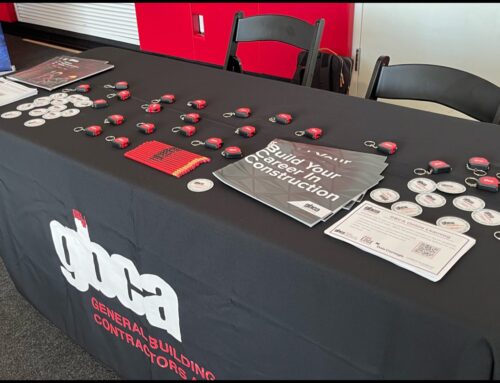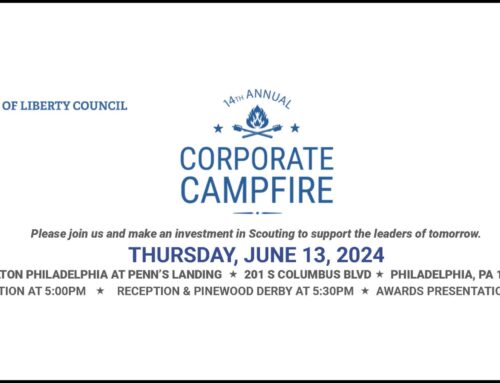This GBCA Safety Toolbox Talk discusses GBCA’s suggested COVID-19 Job Site Protocols – as they pertain to workers. Please visit our COVID-19 Safety Resources for the full Recommended Job Site Protocols and Recommended Response Protocols. Scroll down to read it. Click below to download the Toolbox Talk as a printable handout.
COVID-19 Job Site Protocols
These Job Site Protocols are to be viewed as recommended best practices and are provided solely as suggested guidelines and resources for contractors’ reference concerning COVID-19. These Protocols are not to be relied upon to prevent the spread or transmission of COVID-19 on any specific job site or to prevent a safety violation from being issued by a jurisdictional authority. All contractors must continue to comply with all relevant rules and regulations concerning workplace safety and health. This is not legal advice.
SECTION 1: Worker Personal Responsibilities
- Employees need to take steps to protect themselves.
- If you are sick, do NOT report to work. It is critical that individuals NOT report to work while they are experiencing illness symptoms such as fever of 100.4 or higher (or local jurisdiction), cough, shortness of breath or difficulty breathing, dry cough, body aches, chills, or fatigue, or loss of sense of smell and/or taste.
- If you are sick, you should NOT return to work until:
- If you have not had a test to determine if you are still contagious, you can leave home after these three things have happened:
- at least 10 days have passed since symptoms first appeared, AND,
- at least 3 days (72 hours) have passed since recovery defined as resolution of fever without the use of fever-reducing medications, AND,
- other symptoms have improved (for example, when your cough or shortness of breath have improved).
- If you have had a test to determine if you are still contagious, you can leave home after these three things have happened:
- You received two negative tests in a row, at least 24 hours apart, AND,
- You no longer have a fever (without the use of medicine that reduces fevers), AND,
- other symptoms have improved (for example, when your cough or shortness of breath have improved).
- If you have not had a test to determine if you are still contagious, you can leave home after these three things have happened:
- Individuals should seek medical attention if they develop these symptoms.
- An individual contractor may require, in order to return to work after experiencing any of these symptoms, personnel must produce a doctor’s note or negative COVID-19 test results.
- If you feel sick, uncomfortable, or unsafe, please stay home.
SECTION 2: Social Distancing
- Limit physical contact with others. Direct employees to increase personal space (to at least 6 feet, where possible).
- Limit in-person meetings and replace them with phone or online meetings.
- Take breaks and lunch in shifts to reduce the size of the group in the lunch area at any one time to less than 10 people, ultimately maintaining 6 feet distance between individuals.
- No large gatherings (currently no more than 10 people) on the job site, such as the all-hands meeting and all-hands lunches.
- Avoid trade stacking, evaluate work schedule and consider things like shift work, resequencing work, etc.
- Discourage hand-shaking and other contact greetings.
- Social distancing should be used in hoists/elevators. Social distancing signage should be placed in all areas, hoists, elevators, stairs, and meetings areas. Individuals should be encouraged to avoid hoists/elevators when walking up or down 5 flights of stairs to limit contact with others. Conduct an evaluation of the size of the hoist/elevator to maintain 6 feet when possible. Separate material and people when possible.
SECTION 3: General Jobsite / Office Practices
- A single point of contact/Pandemic Safety Officer should be identified by the General Contractor/Construction Manager for the implementation of all COVID-19 guidance. This individual will be responsible for implementation of all COVID-19 Recommended Job Site Protocols.
- If an employee is well but someone in their immediate household is diagnosed with COVID-19, they should notify their supervisor.
- If an employee is confirmed, diagnosed, or suspected to have COVID-19, inform supervisor.
- Attendance at meetings should be taken verbally and the foreman/superintendent can sign in each attendee. Contractors should not pass around a sign-in sheet or mobile device (iPad, tablet, or mobile phone) to confirm attendance.
- iPad and mobile device use should be limited to a single user.
- Workers will be required to answer questions related to COVID-19 related health conditions. Additionally, personnel may be temperature scanned daily prior to accessing a project by a trained and qualified individual in the safe use and interpretation of thermometers. Temperature scanning may continue for the foreseeable future.
- Do not congregate in lunch areas and wipe all common areas with appropriate disinfectant.
- Do not share tools. When sharing is necessary, wipe down with proper disinfectant first.
SECTION 4: Sanitation and Cleanliness
- Practice frequent and thorough hand washing with soap and running water for at least 20 seconds. Hand washing stations are recommended to help prevent the spread of COVID-19. Hand washing stations or hand sanitizer should be provided at all access points, hoists, elevators, restrooms, etc.
- All workers should wash hands often, especially before eating, smoking, or drinking, and after blowing your nose, coughing, or sneezing. Workers should refrain from touching their face.
- All sites should have hand washing stations readily available to all workers on site.
- Disinfect frequently touched surfaces within the workplace multiple times each day.
- Use disinfectant wipes to wipe down any surfaces (doorknobs, keyboards, remote controls, desks) that are commonly touched periodically each day.
- Portable job site toilets should be properly cleaned by leasing company at least twice per week, when possible. Double check that hand sanitizer dispensers are filled. Frequently touched items (i.e., door pulls and toilet seats) should be cleaned frequently.
- Job site offices/trailers and break/lunchrooms frequently touched surfaces should be cleaned at least twice per day.
- Employees performing cleaning should use proper PPE, such as nitrile gloves and eye or face
protection as needed. - Maintain Safety Data Sheets (SDS) of all disinfectants on site.
- Employers should cover their noses and mouths with a tissue (or elbow or shoulder if a tissue is not available) when coughing or sneezing. Wash your hands after each time you cough, sneeze, or blow your nose, and any time before touching your face or food.
- Do not use a common water cooler. Provide individual water bottles or instruct workers to bring their own.
- Workers should change work clothes prior to arriving home; and to wash clothes in hot water with soap.
- Utilize disposable hand towels and no-touch trash receptacles.
- Avoid cleaning techniques such as using pressurized air or water sprays that may result in the generation of bioaerosols.
SECTION 5: Personal Protective Equipment (PPE)
- Gloves: Gloves are recognized as a means of possibly preventing contact spread. The type of glove worn should be appropriate to the task. If gloves are not typically required for the task, then any type of glove is acceptable.
- Eye protection: Eye protection may be a means of preventing exposure and should be worn at all times.
- The CDC recommends wearing cloth face coverings in public settings where social distancing measures are difficult to maintain. Contractors should continue to provide and direct employees to wear face masks if required by the work. For tasks performed within 6 feet of another person, should consider additional respiratory protection. Please consult a professional for respiratory protection guidance.
- Perform a job hazard analysis.
- Do not share personal protection equipment (PPE).
- Sanitize reusable PPE per manufacturer’s recommendation prior to each use.
- If tasks require workers be within 6 feet, additional PPE is advised. Examples include:
- any kind of face covering and a face shield, OR
- a KN95 (or greater) and eye protection





